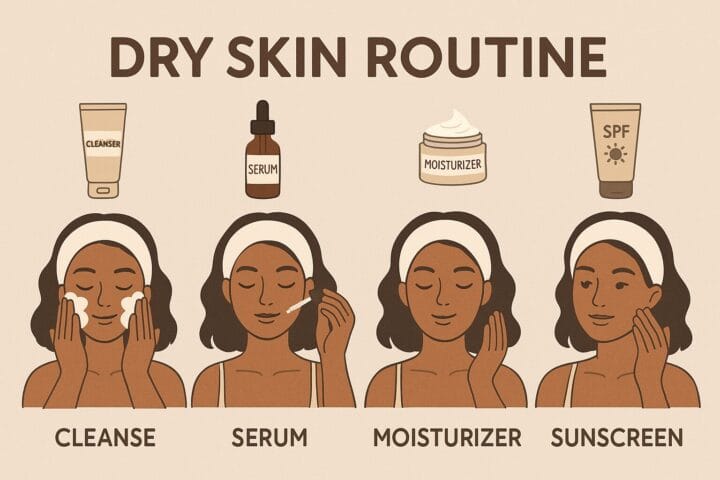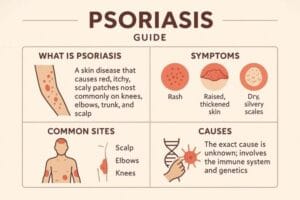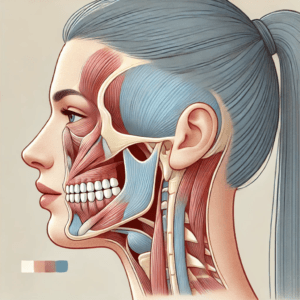Beyond the Flakes: Your Ultimate Guide to Beating Dry Skin
Table of Contents

Beyond the Flakes: Your Ultimate Guide to Beating Dry Skin
If you’ve ever felt your skin tighten after a shower, noticed persistent flaking, or experienced that uncomfortable itch, you know the struggle with dry skin. It’s more than just a minor annoyance; for many of us, it impacts how we feel every single day. We’re not talking about a temporary fix or a superficial glow-up. We’re talking about understanding exactly what your skin needs to truly thrive, moving past the common myths, and embracing strategies that actually work for lasting hydration. Let’s tackle this common concern together, giving your dry skin the consistent, informed care it deserves.
Why Your Skin Feels Like the Sahara: The Lowdown on Dryness
When your skin feels rough, tight, or even looks flaky and cracked, you’re likely experiencing dry skin, medically known as xerosis. This condition isn’t simply about a lack of oil; it’s primarily about insufficient moisture in your skin’s outermost layers. Your skin’s natural barrier, which is designed to lock in hydration and keep irritants out, becomes compromised. Imagine a brick wall where the mortar is crumbling – moisture escapes, and external aggressors sneak in, leaving your skin thirsty and vulnerable.
What Exactly is Dry Skin?
Dry skin signifies a skin type, often something we’re born with, meaning our skin naturally produces less oil (sebum). This reduced oil production means the skin has fewer natural lipids, like ceramides, which are crucial for maintaining a strong, intact skin barrier. When this barrier is weak, water evaporates too quickly from your skin, leading to that characteristic dry, uncomfortable feeling. This is a chronic issue that requires ongoing management.
Common Culprits Behind Dryness
Many factors can worsen or trigger dry skin, turning a mild issue into a persistent problem. Have you noticed your skin getting drier in certain situations?
- Environmental villains: Harsh winters with low humidity, dry climates, strong winds, and even the cozy warmth of indoor heating systems can strip your skin of its precious moisture.
- Shower sabotage: Long, hot showers and baths might feel good, but they are notorious for dissolving and stripping your skin’s natural protective oils, leaving it exposed and dry.
- Product pitfalls: Many common products, like harsh soaps, scented cleansers, and strong detergents, contain ingredients that actively deplete your skin’s moisture barrier.
- The age game: As we get older, our skin naturally thins and produces less oil. By age 60, almost everyone experiences some degree of dry skin.
- Health hurdles: Conditions such as eczema, psoriasis, diabetes, hypothyroidism, or even certain medications can significantly contribute to skin dryness.
- Lifestyle lowlights: Not drinking enough water, smoking, and jobs requiring frequent handwashing can also play a role.
How to Spot the Signs
Recognizing dry skin is usually straightforward. You might experience:
- Skin that feels tight, especially right after washing.
- Rough patches or a scaly texture.
- Persistent itchiness (pruritus), which can range from mild to severe.
- Fine lines that appear more pronounced.
- Redness, peeling, or even cracks that may sometimes bleed in severe cases.
- Skin that looks ashy on lighter tones or grayish on darker tones.
From Ancient Oils to Modern Marvels: A Skincare Time Capsule
Humans have been seeking ways to soothe and protect their skin for millennia. Our journey from ancient balms to today’s advanced formulas shows a consistent desire to understand and combat dryness.
Echoes from Antiquity
Imagine ancient Egyptians, facing a relentless desert sun, slathering on olive oil, honey, and aloe vera to protect their skin. Historical accounts suggest Cleopatra herself bathed in milk, which, with its natural lactic acid, would have offered gentle exfoliation and nourishment. The Greeks and Romans also championed olive oil for both cleansing and moisturizing. Centuries ago, around 150 A.D., the physician Galen is credited with crafting what many consider the first cold cream, a blend of water, olive oil, and beeswax. In India, Ayurvedic traditions embraced daily warm oil massages (Abhyanga) using sesame or almond oil, believing skin health was deeply linked to internal balance. These early practices highlight a long-standing intuitive understanding of the benefits of emollients and humectants.
The Petroleum Age and Scientific Breakthroughs
Fast forward to the 19th century, and we encounter Robert Chesebrough’s accidental discovery of petroleum jelly. Patented in 1851, this simple yet effective barrier product quickly became a household name as Vaseline, offering relief for dry and damaged skin. This marked a shift towards more widely accessible, effective solutions. However, it wasn’t until the late 20th century that science truly illuminated the core issue: dry skin is largely about a compromised skin barrier and a shortage of crucial lipids like ceramides, which are vital for locking in moisture. This scientific understanding allowed for the development of more targeted and effective modern skincare.
Hold Up! Dry Skin vs. Dehydrated Skin: It’s Not the Same Thing!
This is one of the most critical distinctions in skincare, and misunderstanding it can lead to frustrating results. Many people use “dry” and “dehydrated” interchangeably, but they refer to two very different skin concerns requiring distinct approaches.
Busting the Dry vs. Dehydrated Myth
Let’s clear this up:
- Dry skin is a skin type. You’re essentially born with it. Your skin naturally produces less oil (sebum), leading to a chronic lack of lipids that form your skin’s protective barrier. This results in persistent tightness, flakiness, and often a dull appearance.
- Dehydrated skin is a skin condition. Anyone can experience it, regardless of their skin type – yes, even oily skin can be dehydrated! It means your skin lacks water, not necessarily oil. This often happens due to a compromised barrier allowing water to escape, or external factors like environmental stressors and harsh products. Symptoms include dullness, tightness, and more noticeable fine lines, but without the inherent lack of oil.
Why does this distinction matter? Because treating them correctly means your skincare routine actually works. If you have oily, dehydrated skin and only use rich, oil-based products meant for truly dry skin, you could end up with breakouts. Conversely, if your genuinely dry skin only gets water-based hydration, it won’t receive the essential lipids needed to repair its barrier.
Beyond this, let’s debunk some other common myths:
- “Drinking more water is all you need for dry skin.” While essential for overall health, topical care is crucial for dry skin; water intake alone won’t fix a compromised barrier.
- “Oily skin doesn’t need moisturizer.” Absolutely false! Skipping moisturizer can cause oily skin to produce even more oil to compensate, leading to further issues.
- “Hot showers are good for dry skin.” Quite the opposite! Hot water strips your skin of its natural oils, worsening dryness.
- “Thicker cream always equals better results.” Not necessarily. It’s about the right ingredients, not just the texture.
Ingredients Your Dry Skin Will Love
When choosing products for dry skin, focus on ingredients that replenish lipids, draw in moisture, and create a protective barrier. Look for:
- Ceramides: These are natural lipids that act like the “mortar” holding your skin cells together, crucial for barrier function and moisture retention.
- Hyaluronic Acid: A powerful humectant that attracts and holds up to 1,000 times its weight in water, providing deep hydration.
- Glycerin (Glycerol): Another excellent humectant that draws moisture from the air into your skin.
- Urea: Often recommended by dermatologists, urea is a humectant and can gently exfoliate thick, scaly skin.
- Jojoba Oil, Shea Butter, Mineral Oil: These emollients and occlusives help smooth the skin, replace natural lipids, and create a protective seal to prevent water loss.
- Lactic Acid: A gentle alpha hydroxy acid (AHA) that can exfoliate dead skin cells while also acting as a humectant.
- Niacinamide (Vitamin B3): Helps strengthen the skin barrier and improves its ability to retain moisture.
Ingredients to Reconsider
Some ingredients can exacerbate dry skin or cause irritation. Consider limiting or avoiding:
- Drying alcohols (e.g., SD Alcohol, Isopropyl Alcohol, Alcohol Denat): These can strip your skin’s natural oils and moisture barrier.
- Strong fragrances: Artificial and even some natural fragrances can be irritating and drying.
- Harsh foaming agents (e.g., Sodium Lauryl Sulfate): These surfactants can break down your skin’s protective barrier.
- High concentrations of Salicylic Acid or Benzoyl Peroxide: While effective for acne, these can be very drying for already sensitive or dry skin.
- Some Retinoids: If your skin is exceptionally dry or sensitive, high-strength retinoids might increase irritation and peeling; consult a professional before use.
Today’s Top Tips for a Hydrated Glow: What the Pros Recommend
Managing dry skin effectively requires a consistent, proactive approach. Dermatologists emphasize routines that prioritize gentle care and robust moisture replenishment.
Your Daily Hydration Blueprint
- The Golden Rule: Moisturize, moisturize, moisturize! Apply a rich cream or ointment, not just a light lotion, immediately after showering or washing your hands. This traps existing moisture in your skin. Make it a habit to moisturize several times a day, especially when your skin feels dry. A randomized study in the Journal of Dermatological Treatment found that a daily routine of a mild cleanser and moisturizer significantly improved dryness and itching within two weeks for those with moderate to severe dry skin.
- Shower Smarts: Keep showers short – 5 to 10 minutes is ideal – and use warm, not scorching hot, water. Switch to a gentle, fragrance-free cleanser or body wash to avoid stripping your skin’s natural oils.
- Boost Your Home’s Humidity: A humidifier, particularly in your bedroom, can add much-needed moisture back into the air, preventing environmental dryness from impacting your skin while you sleep.
- Protect Your Peepers & Paws: Always wear gloves when doing dishes, cleaning with chemicals, or heading out into cold, windy weather. Don’t forget your broad-spectrum SPF daily, as UV rays can also contribute to dryness.
- Hydrate from the Inside (with a caveat): Drinking plenty of water is fantastic for overall health and supports skin function, but it won’t magically solve chronic dry skin without external care. Think of it as supporting your body, while topical treatments directly address the skin barrier issue.
- Gentle Exfoliation: While harsh physical scrubs are a no-go, a very gentle chemical exfoliant with ingredients like lactic acid or PHAs (polyhydroxy acids) a couple of times a week can help remove dead skin cells, allowing your moisturizers to penetrate more effectively.
When to Seek Expert Help
Sometimes, home care isn’t quite enough. If your dry skin is severe, constantly itchy, cracking, bleeding, or simply won’t improve despite consistent at-home efforts, it’s time to call a professional. A dermatologist can offer:
- Prescription creams (like topical steroids) to reduce inflammation and severe itchiness.
- Discuss advanced treatments, such as in-clinic hydrating facials, microdermabrasion, or specialized therapies.
- Identify underlying medical conditions that might be contributing to your dryness. Recent studies underscore how much a consistent, medically guided routine can improve quality of life for those with chronic dry skin.
The Future is Here (Almost!): Sci-Fi Skincare for Dryness
The horizon of skincare technology promises even more sophisticated solutions for dry skin, blending biology, AI, and advanced delivery systems to create highly effective treatments. We are moving towards a new era of personalized and precision skincare.
Personalized Potions and Next-Gen Ingredients
Imagine a world where AI analyzes your unique skin – its hydration levels, lipid profile, and genetic predispositions – to create custom serums and routines. This hyper-personalization, driven by machine learning, is already taking shape, with smart apps guiding you to products specifically formulated for your needs. We’re also seeing the emergence of next-level ingredients:
- Bioengineered ingredients: These mimic your skin’s natural components more effectively, offering superior hydration and rejuvenation. Think bio-fermented substances and skin-identical lipid precursors that stimulate your skin’s own ceramide production from within.
- “Messenger” exosomes and peptides: These tiny cellular vesicles and protein fragments are game-changing messengers, delivering active ingredients deeper into the skin to stimulate repair, regeneration, and boost collagen and elastin production.
- Targeting Aquaporins: Research is exploring how to boost natural “water channels” called aquaporins (specifically AQP3), which are crucial for water and glycerol transport in the skin, for ultimate hydration.
High-Tech Tools and Tomorrow’s Promise
Beyond ingredients, technology is reshaping how we monitor and treat dry skin:
- Wearable devices: Smart patches and sensors are being developed to track your skin’s hydration levels in real-time, providing immediate feedback and allowing for proactive adjustments to your routine.
- Nanotechnology: This involves using incredibly tiny particles to enhance product penetration, ensuring active ingredients reach deeper layers of the skin for maximum effectiveness without compromising the barrier.
- Advanced light therapies: LED light therapy, for instance, uses specific wavelengths to stimulate collagen and promote hydration, while fractional radiofrequency microneedling offers combined benefits for skin tightening and health.
- Gene editing: For severe or genetically linked dry skin conditions, gene-based treatments could one day correct underlying genetic issues, offering a long-term solution.
These advancements mean that managing dry skin will become increasingly precise and effective, bringing us closer to consistently hydrated, healthy skin.
Your Questions About Dry Skin Answered
Q1: What is the main cause of dry skin?
A: The main cause of dry skin is a compromised skin barrier that loses moisture, often due to naturally low oil production, environmental factors, or harsh products.
Q2: Can drinking more water fix my dry skin?
A: While essential for overall health, drinking water alone won’t entirely fix dry skin; topical moisturizers and a good skincare routine are crucial for repairing the skin barrier.
Q3: How often should I moisturize for dry skin?
A: For dry skin, you should moisturize immediately after showering or washing, and then several times throughout the day, especially when your skin feels tight or dry.
Q4: Is there a difference between dry skin and dehydrated skin?
A: Yes, dry skin is a skin type lacking oil, while dehydrated skin is a temporary skin condition lacking water, which can affect any skin type, including oily skin.
Q5: What ingredients are best for dry skin?
A: Look for ingredients like ceramides, hyaluronic acid, glycerin, urea, jojoba oil, shea butter, mineral oil, and niacinamide to help your dry skin.
Q6: When should I see a dermatologist for dry skin?
A: You should see a dermatologist if your dry skin is severe, constantly itchy, cracking, bleeding, or doesn’t improve with consistent home care.
Q7: Can hot showers worsen dry skin?
A: Yes, hot showers can worsen dry skin by stripping away its natural oils and disrupting the skin’s protective barrier, leading to increased moisture loss














Post Comment